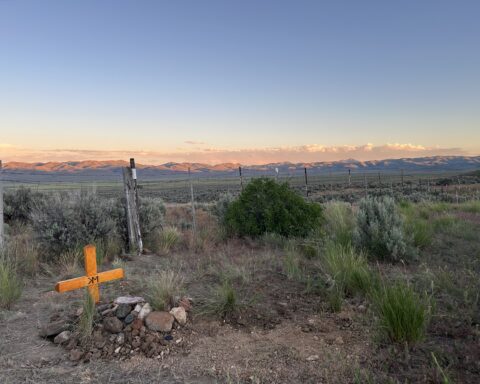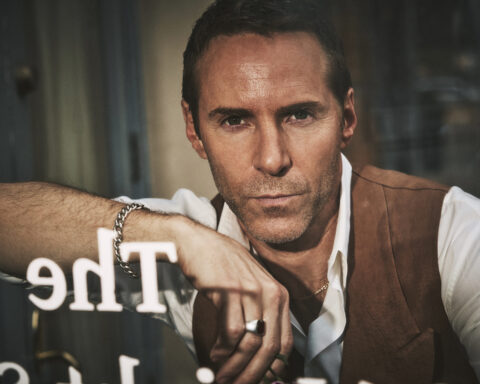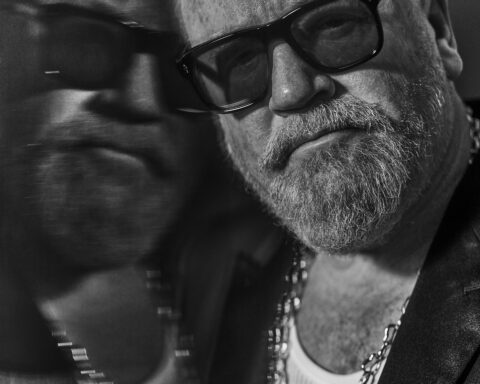No matter the strife, competition, or political battles, we as humans all have one thing in common, our home the Earth.
Since the beginning of the industrial revolution — the transition period to new manufacturing processes in Great Britain, continental Europe and the United States beginning in the 18th century — the race has been on to mass produce using machinery and science amid the relentless pursuit of wealth. Our planet’s population has grown exponentially in recent years, and thus our demands on our home have been forced to support and service such numbers.
Along the way, and especially in the latter part of the 20th century, it has become alarmingly clear that in keeping up with the demand of our human compulsion for more, our planet has suffered immeasurably and as of now, in April 2022, we are at a critical tipping point. The governments of the world, and indeed, all its citizens, have to not only wake up to this reality, but also take massive steps to balance the intricate ecological systems that we have taken for granted for too long.
Beginning on April 22 1970, Earth Day marks the anniversary of the birth of the modern environmental movement. Starting in the US, the first Earth Day led to the creation of the United States Environmental Protection Agency (EPA) and the passage of other environmental laws, including the National Environment Education Act, the Occupational Safety and Health Act, and the Clean Air Act.
In 1990, Earth Day went global, mobilizing 200 million people in 141 countries and lifting crucial environmental issues onto the world stage. Today, Earth Day is widely recognized and marked by more than a billion people every year as a day of action to change human behavior and create global, national, and local policy changes. The 2022 theme for Earth Day in the US is ‘Invest in Our Planet’, an unapologetic pledge that challenges leaders to answer a call to action to preserve and protect our health, families, and livelihoods.
We can all do our bit, make subtle or indeed more drastic changes that will gather momentum and deliver tangible results. There are a multitude of organizations available at the click of your mouse. For starters, make time to visit the Earth Day site and see how you can contribute and learn more.
As one of the world’s greatest educators and environmentalist, Sir David Attenborough, who has brought us ‘Blue Planet’, ‘Planet Earth’, and so much more, exclaimed this week as he approaches his 96th birthday, “The message is that it can be done, the message is that it is possible, the message is that the natural world has more resources than we can possibly imagine, that we’ve worked out how to kill them, now we can give them a chance to come back and save themselves and save us.”
Here we share ten things we can all do to make a difference.
SAVE WATER
Preserve our most precious commodity by being mindful of waste. Turn the tap off in between brushing your teeth and shaving. Fix a leaking faucet and save gallons. Drink filtered tap water in reusable bottles thus reducing landfill too. It’s a no brainer and once you’re in the flow (no pun intended), you’re going to feel good.
LIMIT CAR USE
Be conscious of your car emissions. With a hike in fuel charges, this is going to be good for the environment and for your wallet. If possible, leave the car at home for a couple of days per week and you’ll reduce your personal gas emissions by an average of 1,590 pounds per year. You could try to combine your errands, like managing the school run, grocery shopping and others such chores in one swoop. And make sure to keep your tires inflated correctly, the car engine serviced regularly, and consider public transport or ride sharing — you might just gain some new friends too!
WALK OR RIDE
We all need to maintain our fitness, and our wellness, so ride your bike or walk when you can. You’ll benefit from keeping in shape whilst also feeling the high of exercise and the accomplishment of clocking some healthy miles. Every little positive habit change gathers momentum for feeling good about your progress and the more you do, the more consistent you become, the more other people will be inclined to follow.
REDUCE, REUSE, RECYCLE
Pollution can be reduced by simply putting cans, bottles and paper in the recycling bin. According to the University of Southern Indiana, the average American household dumps 13,000 separate pieces of paper each year, most of it junk mail and packaging. Contact the companies that send you junk mail and get off their mailing lists. Take reusable bags to the grocery store and stop using disposable plates, spoons, cups, and only grab one or two napkins, not a bunch. Purchase products that are made of recycled materials and if you’re a big online shopper, bunch your purchases together to bring delivery emissions down.
COMPOSTING
In 2018, Americans generated 292.4 million tons of trash. Only 25 million tons of that was composted. That’s just in the US. Some was indeed recycled and some used for energy, but half of it, 146 million tons, ended up in landfill. Imagine that daily dumping of plastic and waste that takes thousands of years to decompose, going on all around our world. Horrid! Try diverting more of that waste to your own compost system, which would then reduce the amount of solid waste you produce, while also producing all that lovely natural fertilizer for use in your garden.
LED ALL THE WAY
Compact fluorescent light bulbs (CFLs) are good. They last around ten times longer than traditional incandescent bulbs and use at least two-thirds less energy. But they have issues. Given they contain mercury, they’re hard to dispose of. Instead, enter the superhero bulb, here to save the day (or rather night!). LED, which stands for light-emitting diode, emits light in a very narrow band wavelength, thus they’re super energy-efficient. Start using LED ASAP, and even though they’re more expensive than CFLs and incandescents, you’ll save in the long run as LEDs can last 30,000 hours compared to 1000 hours for incandescents, or 8000 to 10,000 hours for CFLs. Again, a no-brainer!
LIVE ENERGY WISE
Make your home more energy efficient (and save money). Your home’s windows are responsible for 25% to 30% of residential heat gain and heat loss. If they’re old and inefficient, consider replacing them. Also be sure your home has proper insulation. Insulation is measured in terms of its thermal resistance or R-value — the higher the R-value, the more effective the insulation. The amount of insulation your home needs depends on the climate, type of HVAC system, and where you’re adding the insulation. Smaller things you can do right away include replacing your air filter regularly so your HVAC system doesn’t have to work overtime. Keep your window treatments closed when it’s extremely hot and cold outside. You can also consider installing a programmable thermostat so your system isn’t running (and wasting energy) when you’re not home.
EAT SUSTAINABLE FOODS
Today, as much as 25% of green house emissions is down to large scale food production. The question is, how can we eat sustainably? By making the choice to buy food from farmers that aim to conserve the natural resources and have as minimal impact on the land as possible. Try and purchase from local farmers thus cutting down on transportation emissions and more waste. Embrace eating more whole grains, vegetables, fruits, and nuts, and less red meats and processed foods too. It’s a win-win scenario as you’ll not only be saving the planet, you’ll be saving and strengthening your body too. And where possible, grow your own fruits and vegetables. If you haven’t much outside space, start small, using the light from your window ledges, be imaginative and resourceful — the practice of such will make you feel good and connect you directly to the earth.
PLANT TREES
The 2022 United Nations Intergovernmental Panel on Climate Change (IPCC) report showed that things were even worse than before. The majority of countries are not reducing carbon emissions and greenhouse gas emissions continue to rise. We really have to act now. One way to naturally combat climate change is to plant a tree. Plants naturally absorb carbon from the air and one baby tree can absorb CO2 at a rate of 13 pounds per tree every single year. Once that tree reaches 10 years old, it’s at its most productive stage of carbon storage and can then absorb 48 pounds of CO2 per year. Trees also remove all other kinds of junk from the air, including sulphur dioxide, nitrogen oxides and small particles. Also, they give shade in the sunshine and shelter in the rain. How wonderful is nature?!
GIVE UP PLASTICS
We’ve got to get a grip on plastics. The statistics are deeply shocking. People around the world buy one million plastic drinking bottles every minute, and use up to five trillion single-use plastic bags every year. For some reason humans are addicted to plastic, and hardly any of it — approximately 9% — gets recycled. A staggering 68 to 219 million tons of plastic is currently in our oceans. It has to stop. Break the cycle and stop buying bottled water and other drinks that come in plastic receptacles. Use cloth shopping bags. Don’t use plastic straws. Drink from a reusable cup instead of a plastic one. Avoiding plastic will divert tons of waste from our oceans and landfill and also help our aqua marine life and corals survive and thrive once more as is necessary for a growing population.












Wise words…… and good advice !